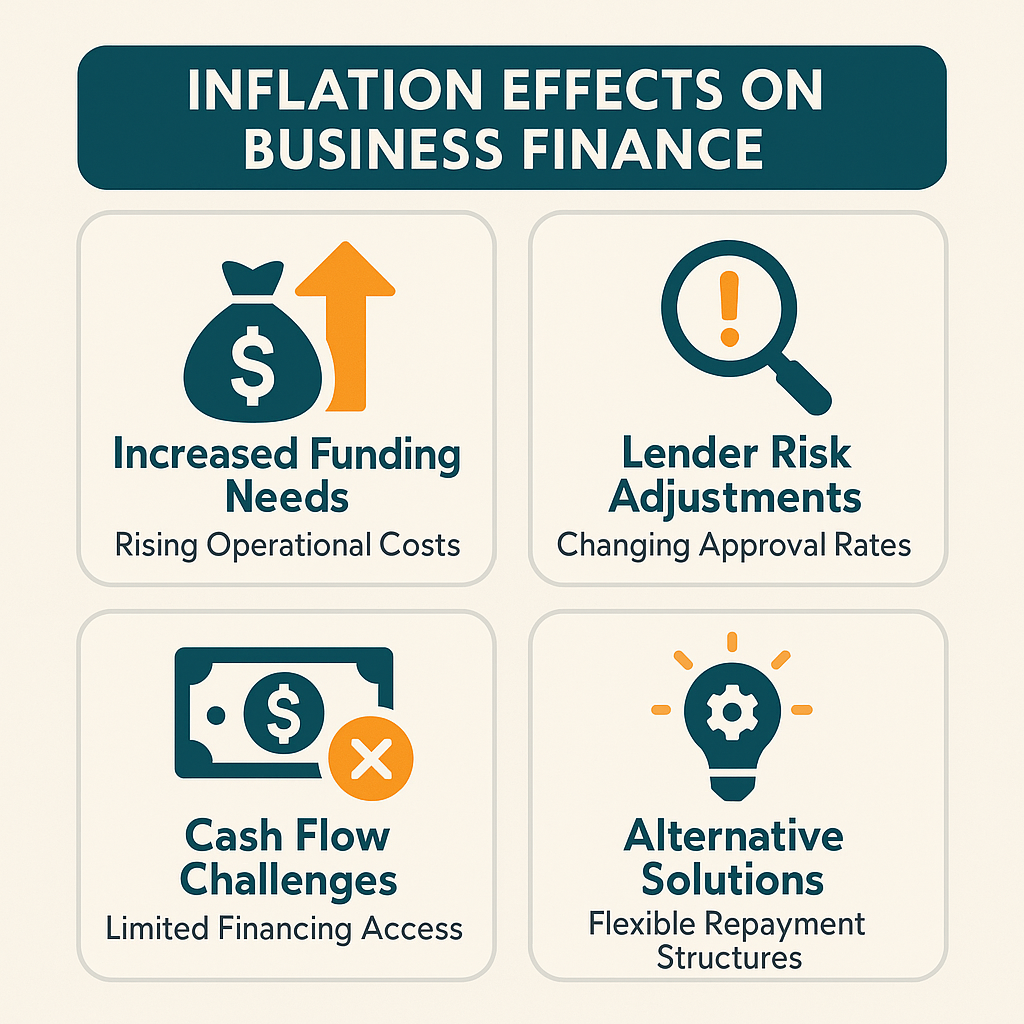Economic conditions shape every aspect of business operations, but few areas feel the impact as directly as funding accessibility. From Federal Reserve policy changes to inflation pressures, macroeconomic trends can transform the entire financing landscape for small businesses.
Interest Rate Fluctuations and Funding Costs
Interest rate fluctuations create ripple effects throughout the small business financing ecosystem. When the Federal Reserve maintains high rates, businesses typically face increased borrowing costs that directly impact their cash flow and expansion capabilities.
- Higher rates may force businesses to postpone growth initiatives or absorb elevated financing expenses that strain operational budgets
- Declining interest rates often signal potential relief for small businesses seeking new funding or refinancing existing debt arrangements
- Rate changes influence lender risk assessment, potentially tightening or loosening approval criteria across different financing products
- Businesses might need to adjust their financial planning strategies more frequently to align with changing rate environments
The relationship between rates and funding demand creates a dynamic environment where timing becomes crucial. Small businesses that monitor these trends closely may position themselves to capitalize on favorable lending conditions or mitigate higher costs through strategic planning.
Inflation Effects on Business Finance

Inflation effects on business finance extend far beyond simple price increases, fundamentally altering how companies approach funding decisions. Rising costs across inventory, labor, and operational expenses create compounding pressures that reshape financing needs and strategies.
- Elevated operational costs may increase funding requirements as businesses need more capital to maintain the same level of inventory or service delivery
- Inflation typically drives lenders to adjust their risk models and pricing structures, potentially affecting approval rates and terms
- Cash flow challenges from rising expenses could make businesses appear less creditworthy, limiting access to traditional financing options
- Companies might seek alternative funding solutions that offer more flexible repayment structures aligned with variable revenue streams
The inflationary environment demands that business owners reassess their financing strategies regularly. Traditional budgeting models may become less reliable, requiring more adaptive approaches to capital management and funding timing decisions.
Strategic Responses to Economic Uncertainty
Strategic responses to economic uncertainty have become essential as businesses navigate fluctuating market conditions and evolving funding landscapes. Smart financial management during uncertain times often separates thriving businesses from those that struggle to maintain stability.
- Technology adoption may help businesses improve operational efficiency and demonstrate stronger financial performance to potential funding partners
- Diversifying funding sources could provide more resilience against economic shifts that might affect specific types of financing
- Enhanced cash flow management practices might help businesses maintain stronger financial profiles during challenging economic periods
- Strategic timing of funding applications could take advantage of favorable market conditions or lender initiatives
Economic uncertainty also creates opportunities for businesses that remain agile in their approach. Companies that leverage strategic financing during market downturns may emerge stronger when conditions improve, having invested in growth while competitors pulled back.
Understanding how economic trends impact business funding empowers small business owners to make more informed financial decisions. By staying attuned to interest rate movements, inflation pressures, and market dynamics, businesses can better position themselves for sustainable growth regardless of economic conditions.

.png)






